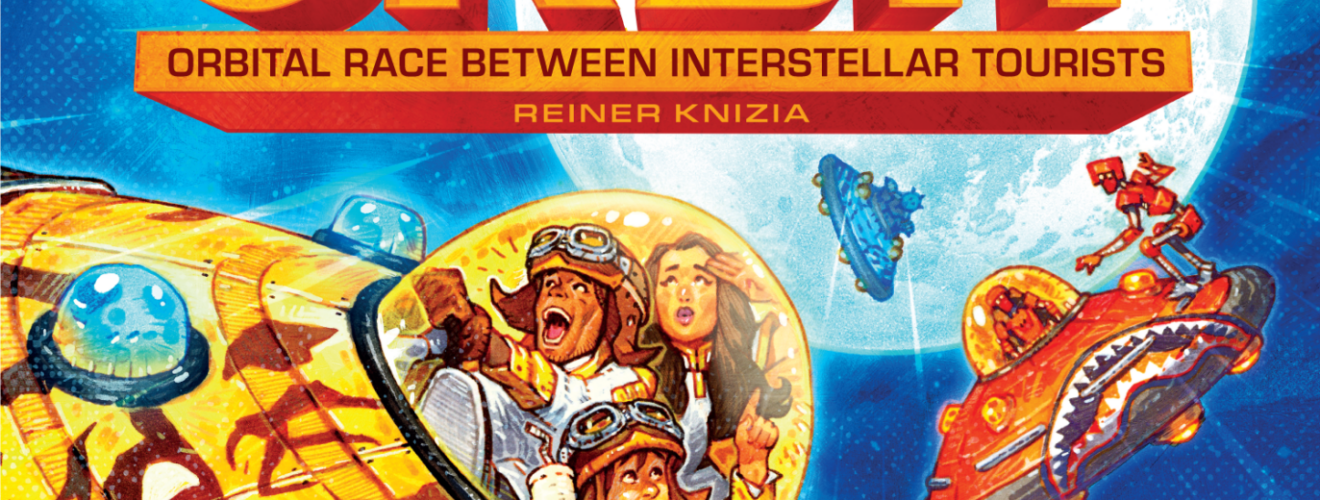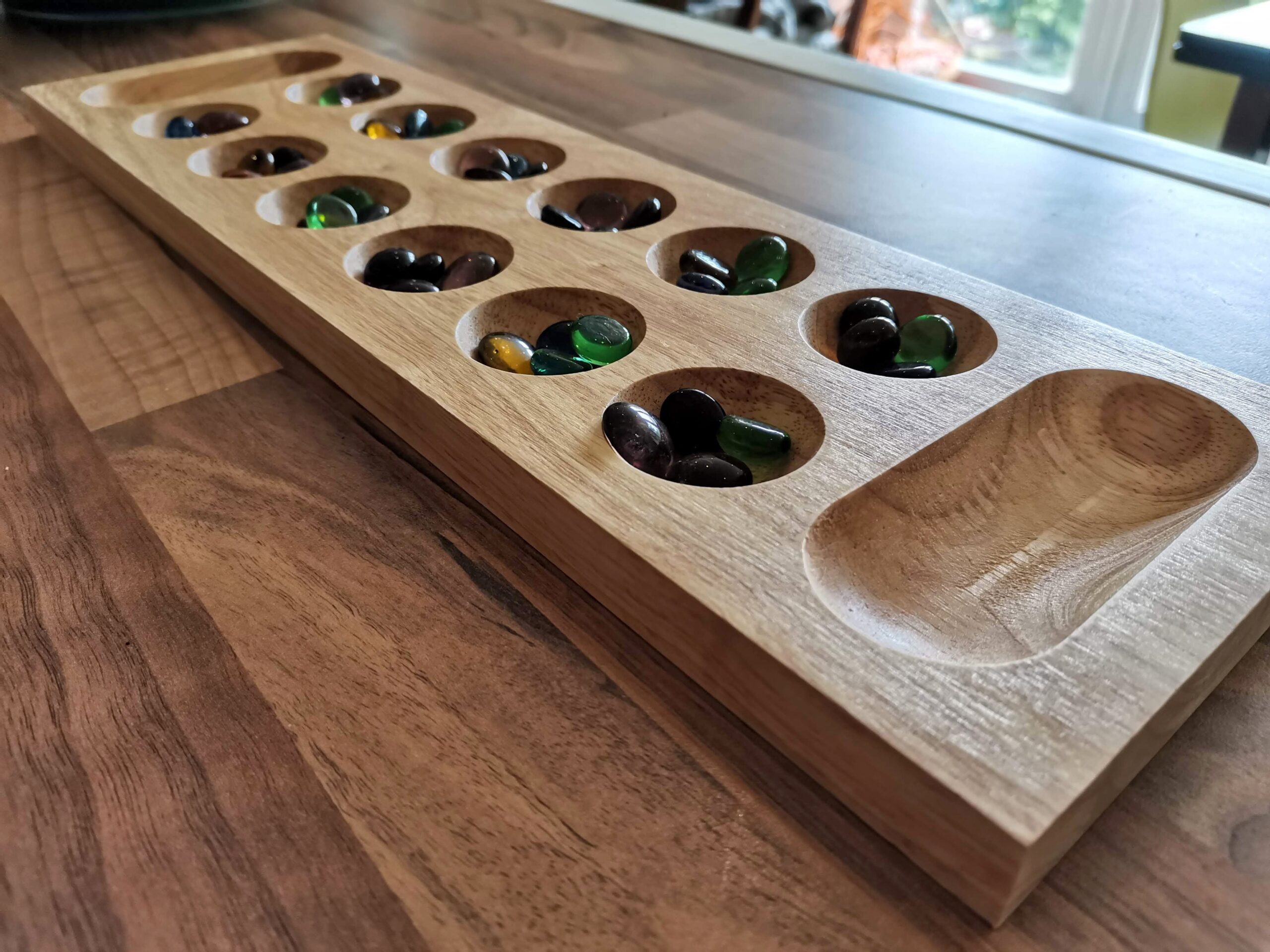Orbit Preview

Did you know there are only a few mammals in the world that lay eggs. They’re called monotremes. One member of the monotreme family is the short-beaked echidna. Orbit is a game about tourists in space. Orbital Race Between Interstellar Tourists. O.R.B.I.T. – get it? But why the heck am I talking about echindas in one breath, and space travel the next? Because, dear reader, my first thought when I played Orbit was “This is like Echidna Shuffle – but in space!”
If you’ve never played Echidna Shuffle, there are two things you need to know. Firstly, it has the cutest board game pieces in existence. Secondly, it’s incredibly interactive and very mean. Those of you who’ve played it know it’s essentially cutesy divorce fuel. Orbit has a similar feeling in the way that every player can move each of the planets on the board, and that every player needs to visit every planet to win. Simultaneously moving the planets you need towards you, while moving those your opponents need away from them. But you are all doing this at the same time.
Sounds like unmitigated chaos, right? Well, yes, but also no.
Staaaar Trekkin’ across the universe
The Orbit game board looks like one of those scanner screens in the background of an 80s sci-fi movie. Planets on dashed, geometric paths. A grid of triangles covers the entire thing. I’ve been playing with a prototype version of the game, but the first thing that struck me is that it’s not very pretty to look at. The cards are bright and easy to read, but the board is a bit bleh. The really weird thing is that after a few minutes, you don’t even notice, because the board is really functional. The aesthetic brevity (for want of a better word) is a strength instead of a weakness.

On your turn, you play a card from your hand which does two or three things. Firstly, it moves one or more planets along its orbital path. It’s as simple as moving the wooden planet to the next spot on the dashed line. Secondly, it has a number. This is the number of junctions along the network of little triangles you can move your spaceship. Thirdly, you might have an extra icon which lets you do something fun, like reverse the direction of a planet’s travel. Chaotic orbital mechanics ripping entire solar systems to pieces – no biggie.
In the style of so many of Dr Knizia’s games – oh, didn’t I mention, it’s a brand new Reiner Knizia design? – the game mechanisms take a back seat and let the game play itself. Your turn is simple. Play a card, move a couple of pieces around, draw a new card. Choosing which card you play, and what you do with that card is where the joy of the game lives. At first it’s a case of “Well, I really want that red planet, so I’ll move it and then move towards it”, but very quickly the true game pops its head around the door like an intrusive neighbour. So much of Orbit depends on keeping an eye on what the other players are doing, and in turn, trying to second-guess what their next move is likely to be.
Tech? We don’t need no stinking te… oh wait, actually, we do
It’s a space game, so it’s got to have tech, right? It’s the unwritten rule. Orbit has techs to go after, but if the five-course, leather-bound menu of tech options in a game like Eclipse (review here) is your frame of reference, the tech offerings in Orbit are more like a blackboard leaning against a jacket potato van. Cheese, beans, cheese and beans. There’s some point-to-point warping, a pretty cool cannon which lets you zap off as far as you want in one direction. You get a couple of these by visiting certain planets, but in addition to that there are space station tiles strewn about the board. When you visit one it’ll either be a permanent tech for your player board or a warp or cannon for all to use.

Despite tech and powerups being a relatively small part of the whole package, they often become the most decisive part of the game. In the early parts of the game, there’s a feeling of every person for themselves, spreading out and looking for close clusters of planets to ping around, like pinballs trapped in a set of bumpers. It quickly becomes a game of side-eyeing your neighbours and opponents when they get down to one or two planets left to go. I love the way alliances are gossamer thin and last as long as a bubble. One moment Alice and Bob are trying to move planets out of the way of Carol, and then Alice jumps on a planet and only needs one more. Now it’s Team Bob & Carol forever! Or for another turn, at least.
No matter how well you keep your eyes on the space race in front of you, good players will spot an opportunity to use something like a warp to make a crazy play that nobody saw coming. Especially when you factor in being able to gain energy cubes, which you can spend a cube at a time to boost the number of steps you can move. The number of times you get blindsided is equal parts infuriating and amazing. If you start to think you’ve got the measure of the game after repeated plays with the same group you can flip the board over to spice things up. The orbital paths for the planets are different and have branches along the way, and it just messes with the basics enough to keep you thinking.
Modular design
I found after a few plays that even with the other side of the board there weren’t too many variables in the game. I’m a heavy Euro nut. I love it when there are a hundred things to tinker with and see what happens. Luckily, there are some extra modules in the box to keep things interesting.
Yay, good times!

The quickest and easiest is the Prism. The rulebook recommends it with two players, and I have to agree. All it does is add an additional, stationary planet to the board to visit, but it’s extra meat to keep you gnawing at the bone a little longer. The module that’s the most interesting in my opinion is the four-player partnership mode. It’s a bit like playing Bridge, with partners sitting opposite one another. Except the game is nothing like Bridge, but you know, other than that. A couple of bonus tiles like you teleport around the board to get things done.
The copy I was sent also has the Nebula expansion included, which I believe may be an additional extra. As long as it doesn’t bump the price too much, I’d say it’s definitely worth getting. There’s a navigation tokens module which helps speed the game up, and another that adds ‘nebula’ tiles to the board which is pretty cool. The nebulas bump planets along their tracks faster, while simultaneously blocking player ships from crossing those points.

The best extra though, and by far the coolest, is the Hyper Accelerator Engine Module. It just sounds cool. With this module, once you upgrade your energy capacity to the max you just shove all those tokens off your board and replace them with a gigantic engine tile. The engine means that any card you play that would add energy cubes to your board instead lets you rocket across the board in a straight line, and then use that card’s movement. I really like this module, because it helps with what is my biggest issue with the game, and that’s speeding up the endgame.
Final thoughts
Reiner Knizia is a machine. He just doesn’t know when to stop. Now it’s true that in the past not every game has been a hit, but his recent record is pretty flipping good. This year’s Cascadero (which I reviewed here) is one of his designs and it’s one of my favourite games of the year. Orbit is one of those games where at first you’d be inclined to say “Wait, this is a Knizia game? Really?”. It doesn’t feel like it has any of his hallmark mathematic stitching under the surface. But as you play, you start to feel the familiar player-driven interaction, with the push and pull of players trying to step over one another to get to the top, while simultaneously reaching out for a hand up.
Dyed-in-the-wool Euro gamers might not have a great time with Orbit. So much of the game is out of your direct control, and a lot of what you do is reactive. You can adapt a big strategy to try to steer parts of the game in the way you want it to go, but you have to remember that everybody else is trying to do the same thing. Despite this, and as counterintuitive as it might sound, it’s not a game of random chaos. A good player with good, reactive planning, will normally do better than a bad player.
Even if you’re a Knizia fan, there’s a good chance you don’t have one of his games set in space (although MLEM: Space Agency came out this year, so maybe). If you enjoy his games like the recent remake of Quo Vadis – Zoo Vadis – then despite the vastly different settings and apparent mechanisms, I think you’ll have a good time with Orbit. The same goes for those of you who played and burned out on Echidna Shuffle. Don’t get me wrong, I love that game, but by the end of the game, it can get pretty painful. Orbit feels similar to me but with much more space between the echidnas planets.
Bitewing and Reiner Knizia are doing some really clever stuff at the moment, and Orbit is another fine example. I prefer it with three or four players, for sure, so if it sounds like your groups kinda thing, check it out.
Preview copy kindly provided by Bitewing Games. Thoughts & opinions are my own.

Orbit (2024)
Design: Reiner Knizia
Publisher: Bitewing Games
Art: Vincent Dutrait
Players: 1-4
Playing time: 60 mins













